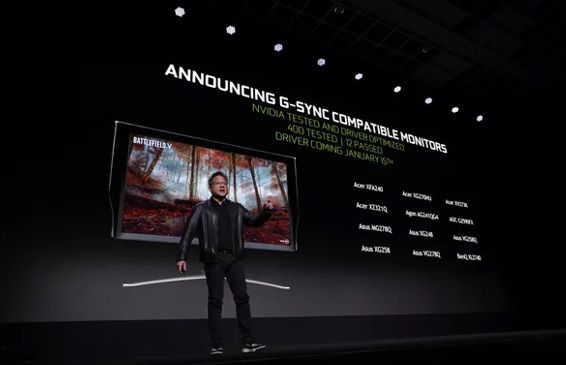At CES last week, Nvidia announced that it would finally be letting opening up support for adaptive sync technologies. For years, Nvidia GPU owners have had to rely on proprietary G-Sync monitors to use adaptive sync. However, today's driver update changes that, opening the door for Nvidia graphics card users to activate G-Sync on FreeSync displays.
Users will be able to turn adaptive sync on with any FreeSync monitor. However, there is a ‘G-Sync Compatible' certification process also in place. When using a certified monitor, G-Sync will activate by default. If your FreeSync monitor isn't certified, you'll be able to turn G-Sync on manually through the Nvidia control panel.
- The list of G-Sync compatible monitors currently includes:
- Acer XFA240.
- Acer XZ321Q.
- ASUS MG278Q.
- ASUS XG258.
- Acer XG270HU.
- AOC Agon AG241QG4.
- ASUS XG248.
- ASUS VG278Q.
- Acer XV273K.
- AOC G2590FX.
- ASUS VG258Q.
- BenQ XL2740.
While G-Sync is proprietary technology that requires an additional hardware module, FreeSync just requires an up-to-date DisplayPort or HDMI connection for variable refresh rates. G-Sync has been possible at a driver level without the hardware module for some time- which has been demonstrated in gaming laptops over the years. Now the ability to activate G-Sync just through the driver will spread to desktop PCs too.
KitGuru Says: Today's Nvidia driver update also adds support for the RTX 2060 , so it is an important one for GeForce graphics card owners.
 KitGuru KitGuru.net – Tech News | Hardware News | Hardware Reviews | IOS | Mobile | Gaming | Graphics Cards
KitGuru KitGuru.net – Tech News | Hardware News | Hardware Reviews | IOS | Mobile | Gaming | Graphics Cards



